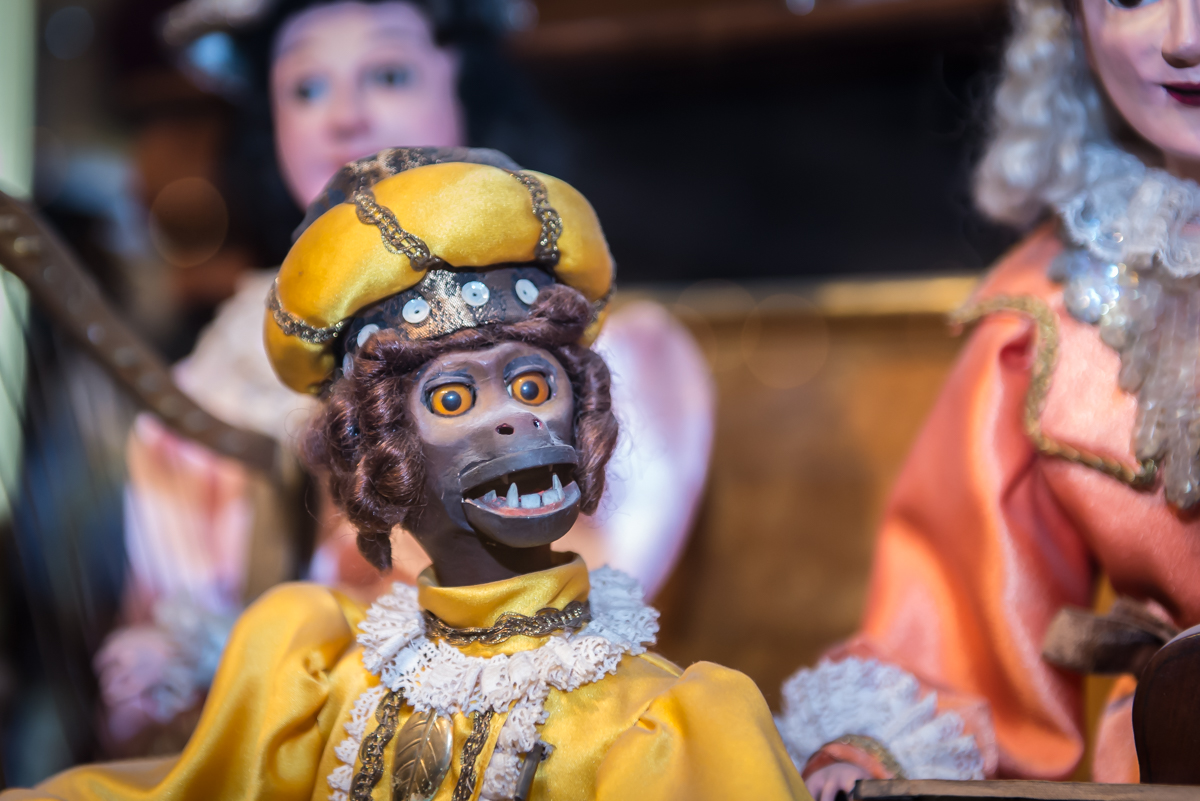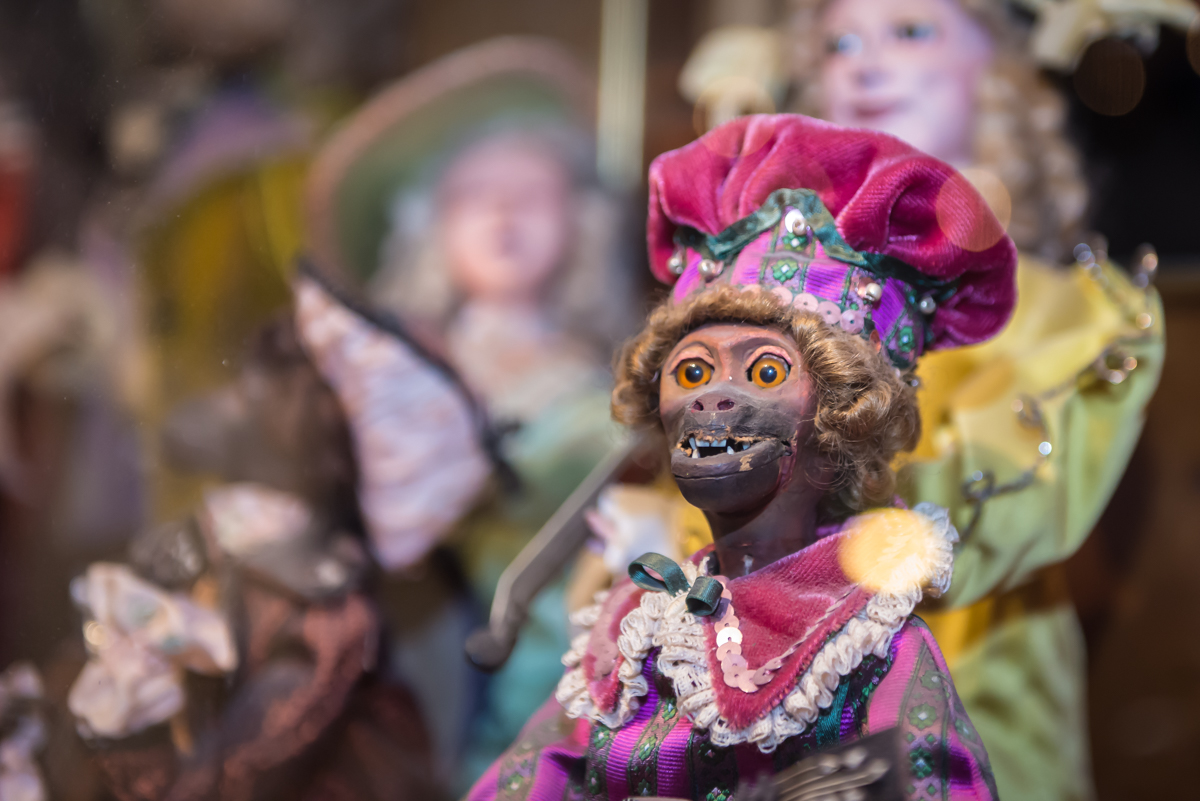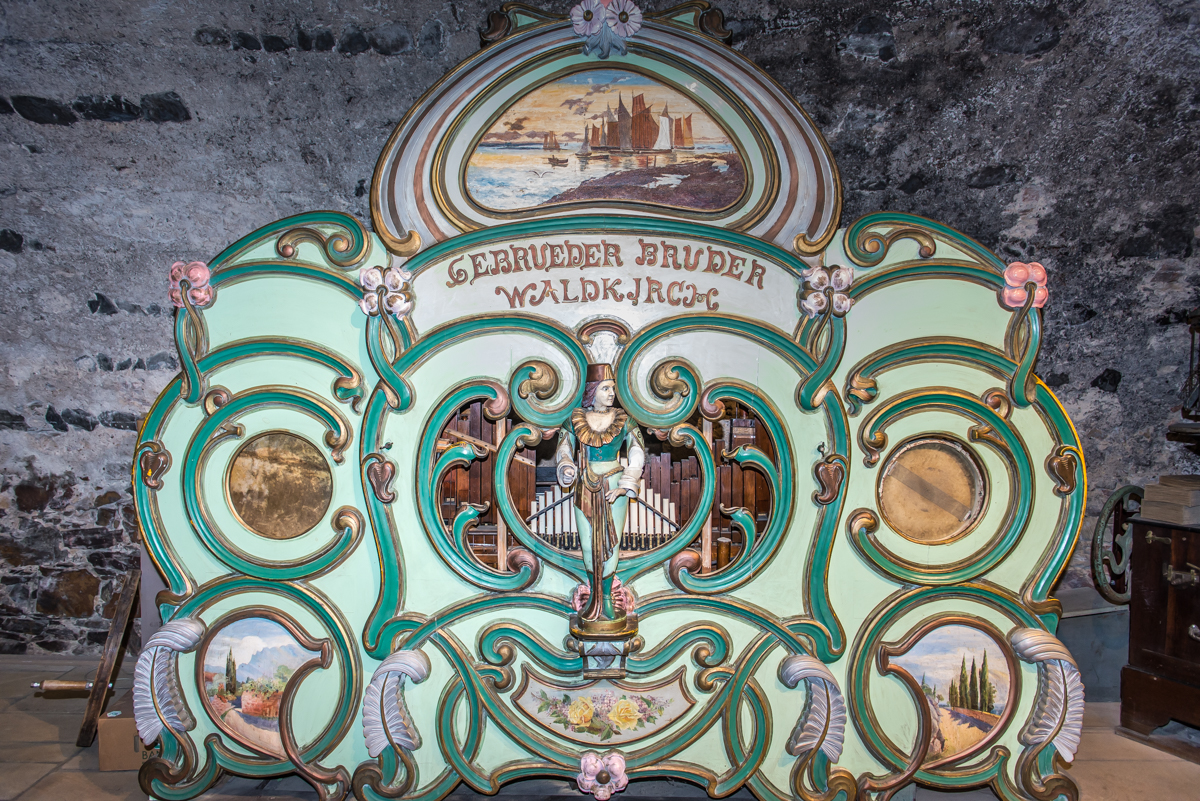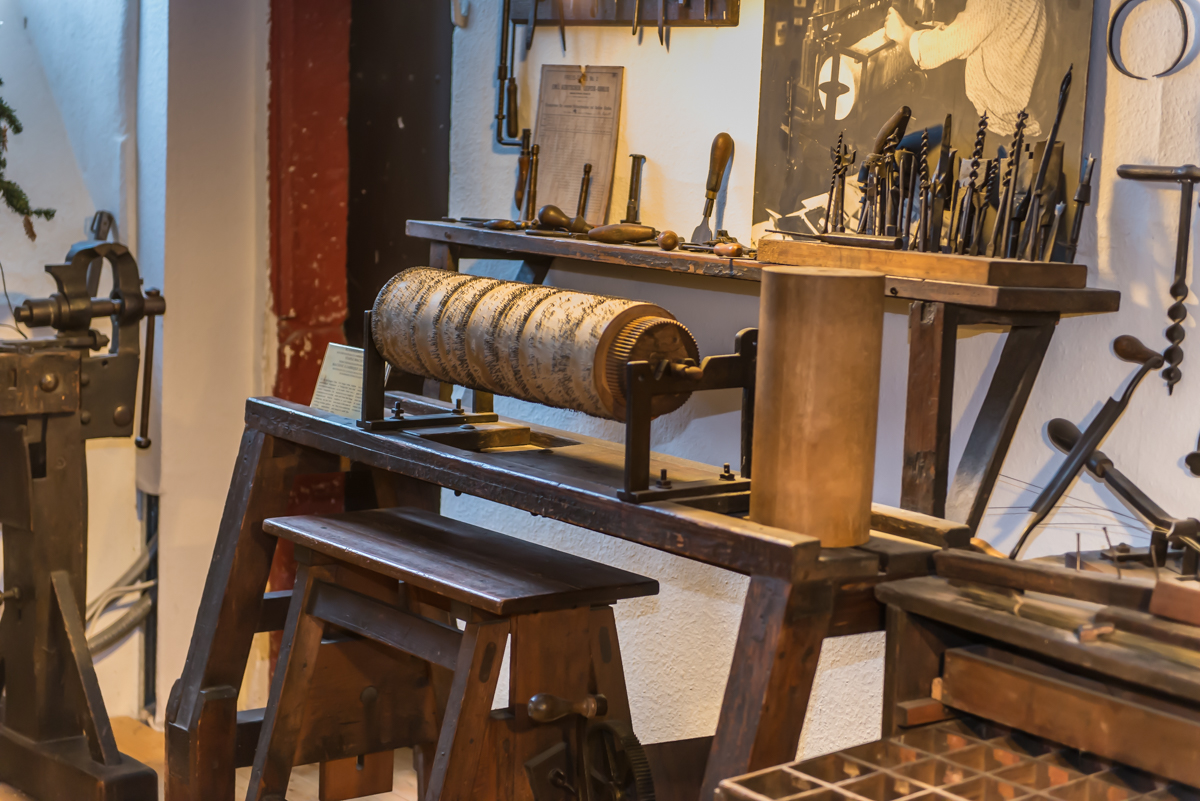The next morning we were picked up at the ship by several mini trains that shuttled us up the hill to the Siegfried Mechanical Music Museum. Initially I wasn’t sure I was going to get up to go see this museum but I’m really glad I did. It was wonderful! The tour lasts about 45 minutes and you are escorted through the history of several mechanical musical instruments and cabinets, some of the collection is over 300 years old and everything is in working order. The museum is housed in a 15th century knight house above the Drosselgasse in Rüdesheim am Rhein.
I went to their website and used Google translate to insert a little information about some of the images I captured. Some info was captured from other websites about the instruments. So the photos are mine – the descriptions are not 🙂
#SiegfriedMechanicalMusicMuseum, #Rudesheim, #Uniworld, #RhineHolidayMarkets, #TerriButlerPhotography
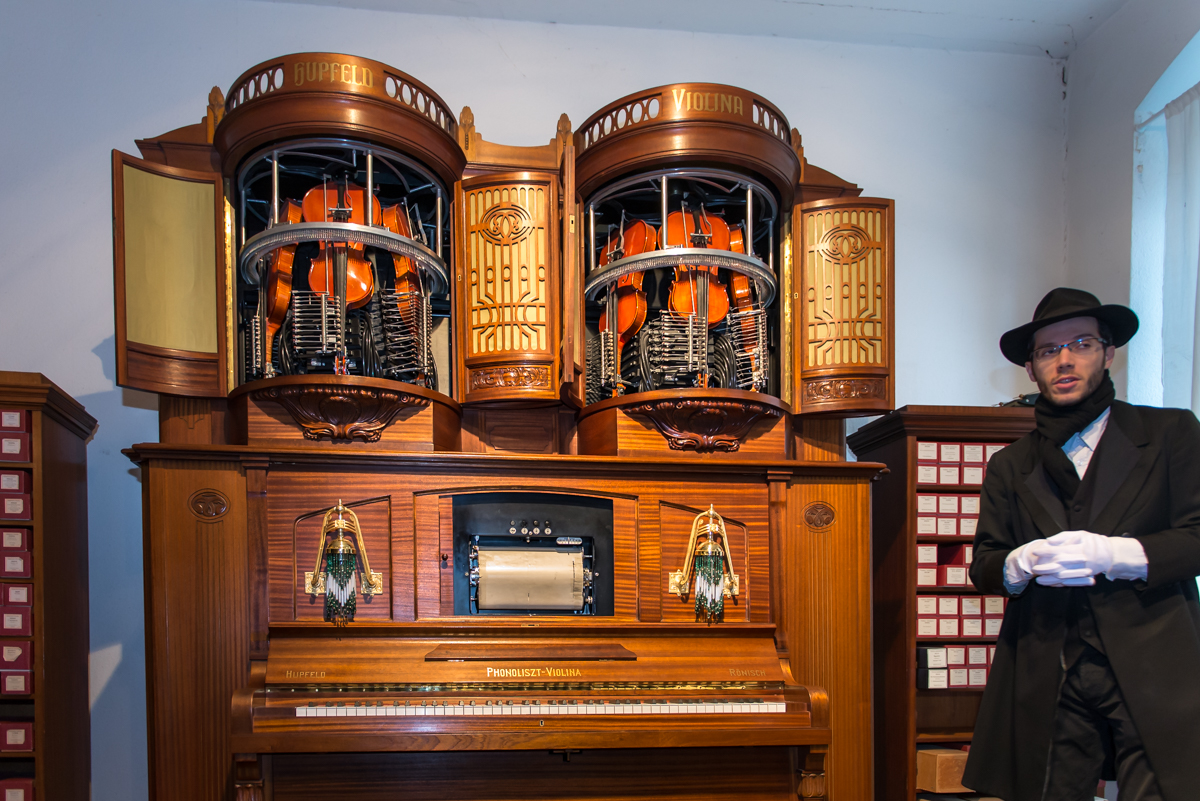 The Hupfeld Phonoliszt-Violina was first made in 1908, by a German piano factory called Hupfeld AG. It was run by a German man called Ludwig Hupfeld. The Hupfeld Phonoliszt-Violina is a piano and a violin. You have to insert a music roll that it reads. This music is paper with holes. To work it you have to press a peddle or you can plug it into a powerpoint and it plays by itself. The violins are held at the top of the piano and are played with bows and robotic fingers. There are three violins – E string, A string and D string. The keys on the piano are pulled down by strings. Hupfeld’s ‘violin player’ was one of the marvels at the World’s Exhibition of 1910 in Brussels.
The Hupfeld Phonoliszt-Violina was first made in 1908, by a German piano factory called Hupfeld AG. It was run by a German man called Ludwig Hupfeld. The Hupfeld Phonoliszt-Violina is a piano and a violin. You have to insert a music roll that it reads. This music is paper with holes. To work it you have to press a peddle or you can plug it into a powerpoint and it plays by itself. The violins are held at the top of the piano and are played with bows and robotic fingers. There are three violins – E string, A string and D string. The keys on the piano are pulled down by strings. Hupfeld’s ‘violin player’ was one of the marvels at the World’s Exhibition of 1910 in Brussels.
The method used in building orchestrions, i.e. to play several instruments in a case with a control mechanism, was also used at the beginning of the 20th century to provide a self-playing “classical” piano and violin combinations. The Hupfeld Company invented a device in 1907 which was dubbed the “8th wonder of the world” for automating the violin part. Three violins (each with only one active string) mounted vertically were played by a round rotating bow made of 1300 threads of horse hair, according to the program on the roll of perforated paper. The small bellows replaced the violin player’s fingers, pressing on the strings to obtain the necessary notes. The piano can be driven either unaccompanied or together with the violins. It controls 38 accompaniment keys with 12 high notes (one octave) in extension. The whole pneumatic systems are controlled by an electric engine of uninterrupted current. The Hupfeld Company sold this type of instrument for 20 years without any competitors. – AntiqueHQ
Bernhard Dufner’s band of 27 automatic dolls, each one playing a different instrument. This is the largest Doll Automaton calliope that was ever built. It is almost 4.0 meters wide, 2.80 meters high and 1.0 meters deep and is an impressive example of black forest Orchestration architecture.
The world’s most famous town for building fairground organs was Waldkirch, located deep in Germany’s Black Forest. From this small community several firms produced marvelous band organs and shipped them worldwide, including to many American locations such as Coney Island.
Among the organ builders, one of the most highly acclaimed was Gebrüder Bruder (Bruder Brothers), which was one of several business entities set up by the Bruder family. With beautifully crafted mechanisms, ornate façades and powerfully voiced yet sweet-sounding pipes, the Bruder organs gained worldwide fame. A circa 1912 Bruder catalogue noted:
“The organs and musical instruments described herein are first class. They are of strong and solid construction; only the best materials are used. The ornamentation of the cases is practical and artistic. The voicing and the musical effects are just with orchestral arrangement of the music books in mind. The Bruder instruments have gained a worldwide reputation as being the best in the domain of mechanical concert organs.”
In their catalog, the Bruder Brothers describe the organ as a symphony orchestra organ with a musical effect of approximately 16 musicians. The organ has 52 pitches. Cast: double bass, bass, Bombardon, trumpets, flutes, violins (Violin Part), mixture, Forte and piano playing, large and small drum with cymbals.
As fairgrounds became more mechanised at the end of the nineteenth century so did their musical needs grow. The period of greatest activity of fairground organ manufacture and development is from the later 1880s through to the introduction of effective electrical sound amplification in the mid-1920s. The organ chassis was typically provided with an ornate and florid decorative case façade designed to be a further fairground attraction in its own right as with all fairground equipment.
Mechanical or automatic musical instruments work like computers. You have a data memory and a system that stored information can implement a targeted manner. It is immaterial whether only a single tone, a signal or a tone sequence is being sounded. Although it was the term “data storage” in the heyday of self-playing musical instruments – from the 17th century to the 30s of the 20th century – unknown but even the oldest data storage system, the bestiftete roller works on the same yes / no principle as the modern PC, pin in the roller means sound, no pin in the roller means no sound.
Here are a few more images from our tour of the museum:
After the tour of the Music Museum you can visit their museum gift shop. They have several music boxes, snuff boxes and bird cages as well as the usual books and postcards. If you are in the market for an antique and very expensive music box, they have them for sale as well.
A great way to spend a few hours in the morning in Rudesheim Germany.
